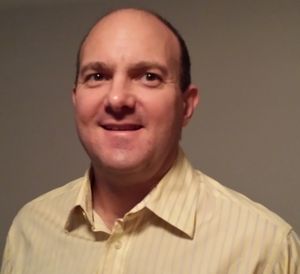Summary
-
The Doyletic Speed Trace has the effect of removing unwanted emotional memories, unwanted body states and unwanted reactions and responses.
-
It’s a simple memory technique that you can learn in five minutes.
-
If you’d like me to walk you through it, see if we’re a match.
Top photo via David Werbrouck / Unsplash
Every contact leaves a trace.
Edmond Locard
More
It’s fast. You can do this as fast as you can talk.
I’ve had great success using this technique on myself, and I teach it to many of the people I work with. What I like about this technique is that it presupposes that our own old learning is responsible for current problems, rather than, for instance, stuff that’s happening to us now that’s out of our control.
Playing with time (direction, speed, where we start, where we finish) can change experience in interesting ways. Because we have a causal model of the world - “A causes B causes C causes D then E happens” - if we run unpleasant sequences forwards, we end up stopped and stuck in an unpleasant state. If we run them backwards, we have a felt experience in the present of changing something “experientially unpleasant” into something at least “experientially neutral”. We learn something new about ourselves and the world on the spot. In “therapy-land”, I think this is very important.
The Doyletic Speed Trace is an “affect bridge”, a wide-awake regression tool, named after its originator, Doyle Henderson. He calls the unwanted body states: “doyles”.
Doylic memories can be quickly removed by holding the bodily states (or having them hold you) and placing one’s mind at time marks from one’s current age to BELOW the age at which the bodily states (doyles) were stored. That age will be below five for childhood events and the age of any traumatic events at older than five. The process for doing this Hold and Mark procedure is called the Speed Trace.
Reference
Bobby Matherne, (1940 - 2019), all-around good guy and interesting character curated doyletics.com:
(4 mins)
Doyle removal does not come from recovering the original event, rather, it is the going BEFORE the original event while holding the doyle that works every time.
Therapists who have used regression techniques have thought for a long time that it was essential to recover the original memory to achieve relief. And they probably have stains on their carpeting and patched holes in their walls to show for their beliefs.
Once you’ve done a few speed traces, you will find out for yourself that recovering the original event is completely optional, and, most importantly, it is completely unnecessary to obtaining relief from some onerous doyle. But it has one salient function which makes it very important:
The MOST IMPORTANT function of the Plausibility Question or PQ is this: You get CONFIRMATION of a SUCCESSFUL TRACE immediately!
No need to wait 2 or 3 weeks to find out if the doyle returns. You know immediately that a speed trace has worked because a speed trace transforms a doylic bodily memory into a COGNITIVE memory, and getting plausible explanation for the original event demonstrates immediately that you have done just that: COGNIZED a DOYLE!
Understanding Is The Booby Prize
 Photo via Charles Deluvio / Unsplash
Photo via Charles Deluvio / Unsplash
-
You acquired your problem without understanding.
-
You can get rid of your problem without understanding.
Most of us think of J. Konrad Stettbacher as the first who wrote a book with instructions on how to conduct one’s own regressive therapy. But long before Stettbacher and before Jean Jenson and Paul Vereshack, Doyle P. Henderson had written, Amazing Truths About Your Emotions. He originally made his book available as shareware on many computer bulletin boards. While not touted as a do-it-yourself therapy project, the instructions were in his book and available for many to read and use.
Instructions
-
You are going to be feeling familiar feelings (feelings that you have successfully experienced many times before).
-
Decide what feeling/emotion/emotional reaction you want to get rid of.
-
If it helps, close your eyes.
-
Build the feeling inside you using the trigger of your choice (for example, “the guy in the red van today who cut me off in traffic”).
-
Ask yourself, “What sort of feeling is this?” for example, “angry”.
-
Ask yourself, “How strong is this feeling?” (1 - weak, 10 - strongest). for example, “8”
-
Ask yourself, “Whereabouts in my body is this feeling?” for example, “upper arms”
-
So now your label is “this upper-arms-angry-8 feeling”.
-
Start with your current age and go backwards in jumps until you don’t have the feeling any more.
Example for a 42 year-old who has the feeling down to 3 years old:
- Said out loud: “I am 42. Do I have this upper-arms-angry-8 feeling? … Yes”
- Said out loud: “I am 40. Do I have this upper-arms-angry-8 feeling? … Yes”
- Said out loud “I am 30. Do I have this upper-arms-angry-8 feeling? … Yes”
- Said out loud “I am 20. Do I have this upper-arms-angry-8 feeling? … Yes”
- Said out loud “I am 10. Do I have this upper-arms-angry-8 feeling? … Yes”
- Said out loud “I am 5. Do I have this upper-arms-angry-8 feeling? … Yes”
- Said out loud “I am 3. Do I have this upper-arms-angry-8 feeling? … Yes”
- Said out loud “I am 2. Do I have this upper-arms-angry-8 feeling? … No”
- Ask yourself the plausibility question: for example, “What could plausibly have happened to me between the ages of 2 and 3 to cause me to learn how to make this feeling?” Sometimes an answer will come to you, sometimes it won’t. IT DOESN’T MATTER.
-
Take a deep breath.
-
Try to build the feeling again the same way (for example, “the guy in the red van today who cut me off in traffic”). In all probability, you won’t be able to. You will have “cognized a doyle” = extinguished an unwanted emotional response = done extinction training = learned something new about yourself and the world = turned an emotional memory into a cognitive one.
Tips
-
If it helps, use extra language to regress: eg. “I am now 10. I place my mind at 10 and I bring to mind everything that is happening in my life at 10. At 10, am I experiencing this upper-arms-angry-8 feeling?”
-
Try to trace below five years old. That’s the memory transition age in doyletic theory.
-
You’ll have the best success if you use your least conscious representation system to trace. This means it’s useful to know your Markova stack:
Markova stacks: enhancing NLP use of sensory modalities (Six patterns of human intelligence, and how they affect communication and learning.)
How to do a doyletic Speed Trace (A fast and easy way to recode unpleasant emotional states so they don’t recur.)
-
It’s possible to trace to:
- Your mother’s pregnancy with you
- The moment of your conception
- Before the moment of your conception (splitting to two cells, one in each parent’s bloodline)
-
There’s always a time when everything was OK. Go back as far as you need to find it/experience it - as many generations as you like (your entire bloodline), Genesis, the beginning of the Universe, the beginning of time, before the beginning of time.
-
Be careful what you trace because it can be a one-way trip. Good candidates to trace would be very unresourceful states of helplessness, hopelessness, worthlessness, powerlessness, and self-judgment.
-
You can speed trace anytime, anywhere by wearing sunglasses and pretending you’re speaking to someone on your mobile phone.
-
During the trace, sometimes memories will just come at you. Let them come. Let them go.
-
It’s not necessary to recover the “original” memory.
Theory
The “original event” is stored in the amygdala.
Throughout life, the amygdala attaches emotion to new memories.
The cortex can have inhibiting effects on the amygdala, but in kids, the connection between the cortex and the amygdala is not fully formed, so there’s less inhibition in childhood. This is why more numerous powerful “emotional” memories are laid down in childhood than in adulthood.
When the amygdala gets triggered (detects a threat), within about 1 fiftieth-of-a-second (20 milliseconds), it begins initiating physiology: it creates bodily states of tension, pain; it changes respiration rate and depth; it changes heart rate; it shunts blood from and to muscles and organs.
About 25 fiftieths-of-a-second later (500 milliseconds), we begin to become cognitively aware of our body state (eg. heart pounding, can’t breathe, tight stomach, adrenalin). This is how our “subconscious” gets our “conscious” attention. Note that we are NOT usually aware of a memory. We think we’re reacting to what has just happened but we’re actually reacting to a current-pattern-match whose template was created in the past.
Would you let a 3-year-old drive a car? We are allowing our 3-year-old self to run our body!
This “feeling” or “body state” is traceable.
In the presence of a trigger stimulus, we go backwards through the years until BEFORE the original event. As soon as we track back before the age of the original event, the bodily state will disappear.
The presence now of a working hippocampus and neocortex allows the cognitive components of the original event to be passed along to the hippocampus and from there to the neocortex. So an emotional memory is converted into a cognitive memory (which the brain was too immature to do at the time).
After speed tracing, the same stimulus that previously created a host of bodily states (“doylic memory”) will only cause a cognitive memory of the original event and no body state.

